✕
Schematically, Singapore’s eight-story, 204-room Edition Hotel encloses a courtyard and shares a site with a 28-story, 154-unit apartment tower. In the hands of Safdie Architects, the project becomes even more bravura. It’s as if a 60-foot-wide slit had been cut to split the apartment tower in half vertically, and the cut then folded down to form a 290-foot-long bridge that rests on the hotel’s roof and overhangs the walkways at either end. Above this bridge is the hotel’s most striking feature—a 140-foot-long swimming pool. For those with a fear of heights, beware: Swimmers will encounter a clear acrylic panel set into the pool floor that offers a view nine stories down to a lush courtyard.
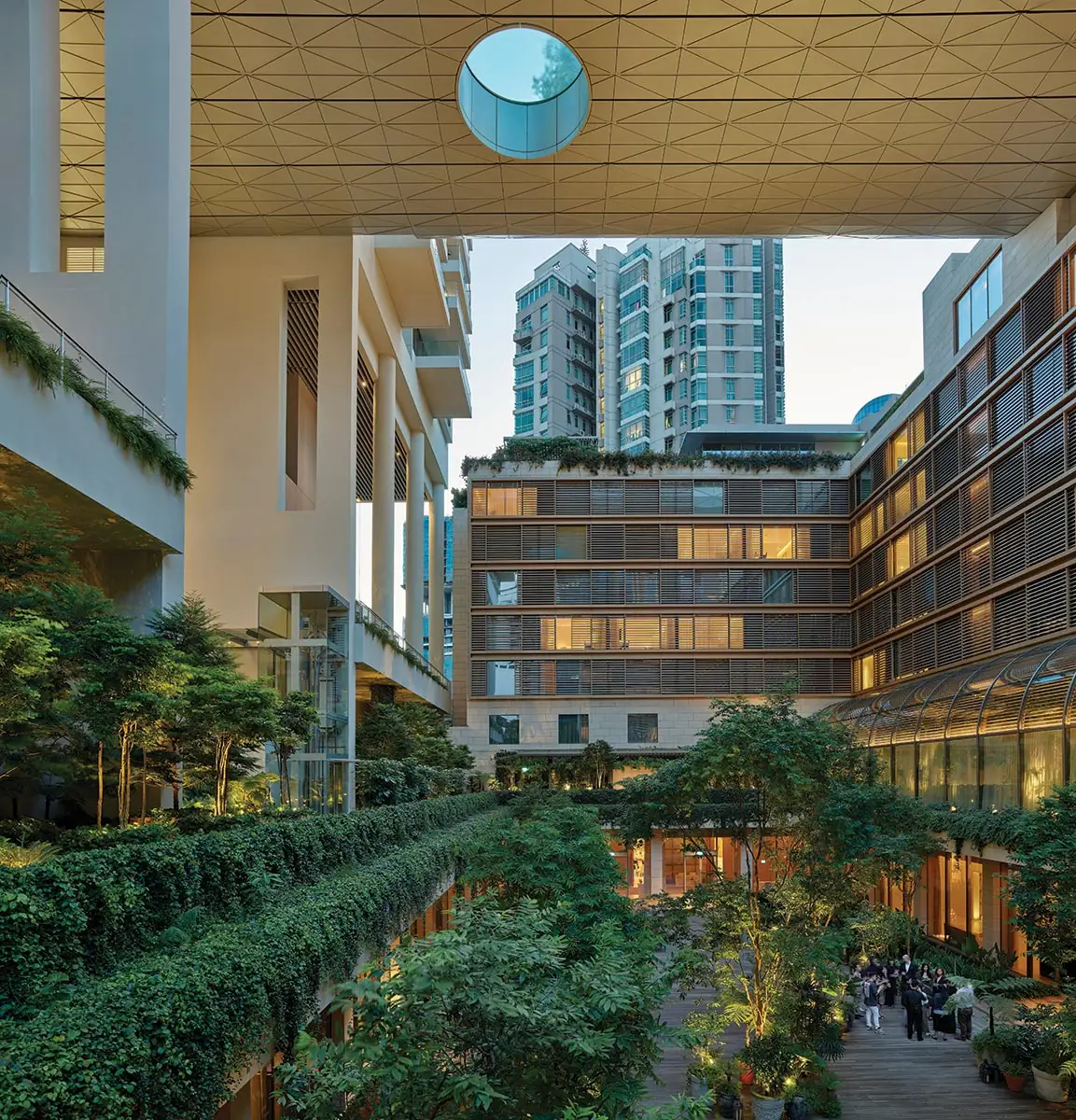
1
A bridge hovers high above the hotel’s sunken courtyard garden (1) and towers over the entrance (2). Photos © Timothy Hursley, click to enlarge.
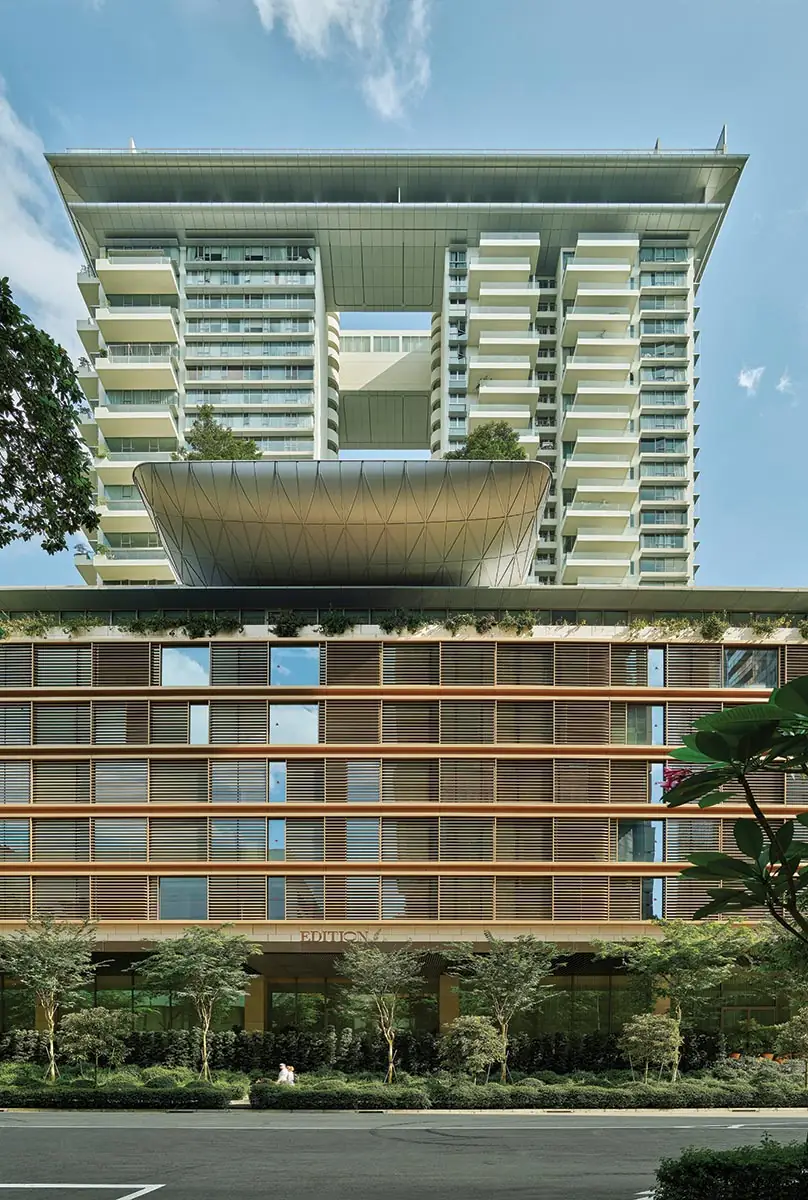
2
Clearly, Edition is not satisfied with the norm of a glass-box hotel. Singapore, which loves architectural spectacle, expects more. And Safdie is well known locally, having designed Marina Bay Sands, the shopping, casino, theater, convention and 2,600-room hotel complex that is an iconic presence on the skyline.
Safdie Architects was commissioned by prominent Singaporean real estate company City Developments Limited to design the combined hotel and apartment building for a site near the luxury shopping district of Orchard Road. The developer chose Ian Schrager’s 20-hotel luxury chain Edition, a hospitality guru whose hotels have a distinctive architectural theatricality, as the operator. “Ian is very focused on his vision for Edition,” comments Safdie partner Jaron Lubin, who worked with Schrager’s in-house team and CAP Atelier, a Hong Kong-based interior design firm specializing in the hospitality industry. Each brought a distinctive aesthetic.
“The location and its access immediately gave us an idea for the organization,” explains Lubin. “We like to talk about the courtyards in Singapore, like the famous Raffles – city hotels in dialogue with oasis gardens.”
Courtyard-facing hotel rooms overlook the densely-vegetated trees and shrubs that line a sunken garden. Plants climb the walls and spill from terraces and open bridges that run beneath most of the apartment tower’s residential floors. The lowest floors are raised above concrete columns to avoid direct sightlines to the edition. The permeable tower base filters the scorching tropical sun and allows ample natural light into the garden.
While a developer might not have considered sacrificing profitable floor space, Singapore encourages this type of daylighting with what Lubin calls the 45-degree rule. This involves extending an imaginary diagonal plane from overhanging edges into open areas within a building envelope. The floor area below the plane does not count toward the building’s total allowable square footage. Other guidelines also include publicly accessible outdoor areas. So the courtyard and pool deck are “open” for zoning purposes.
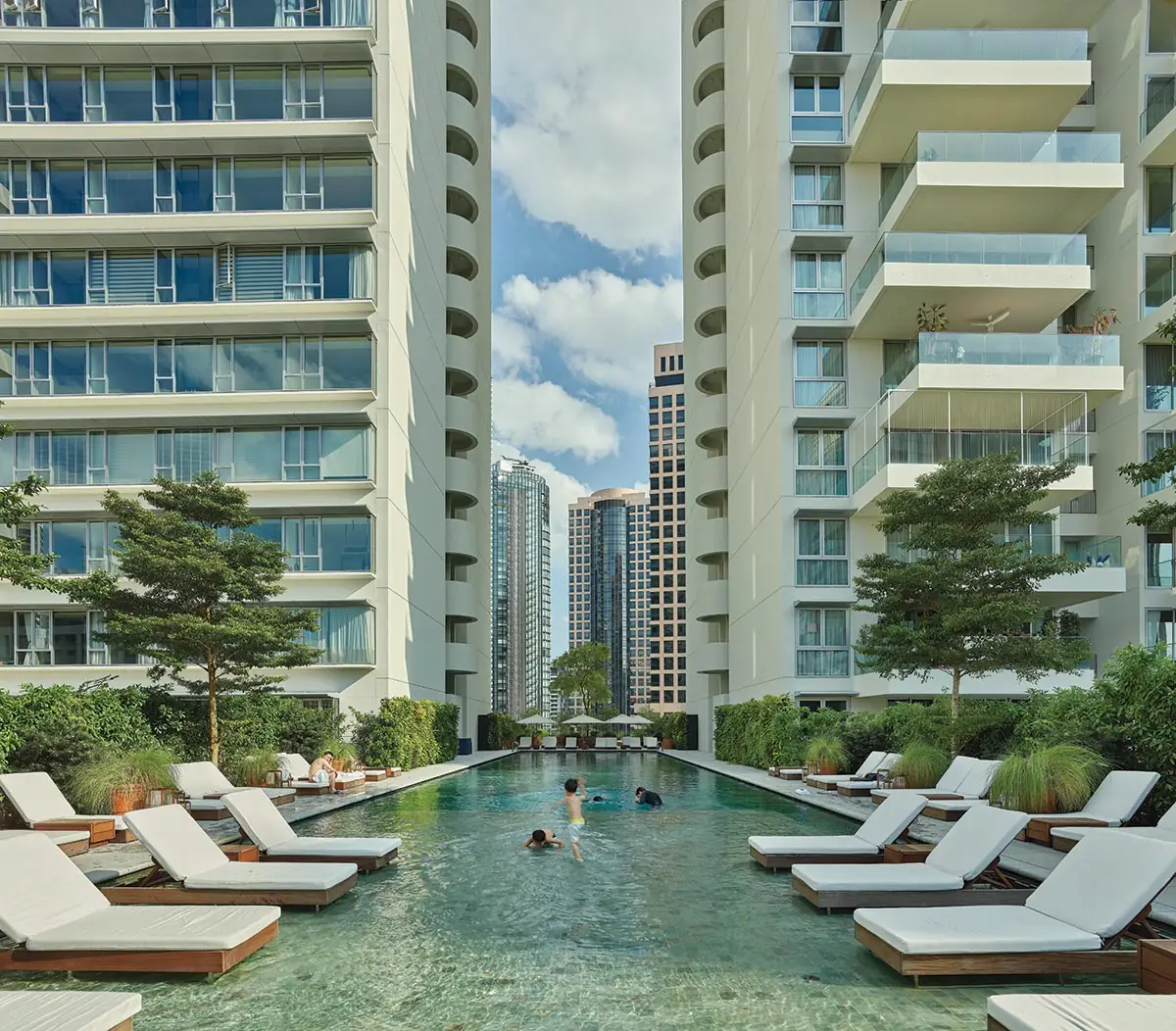
The bridge’s pool deck offers elevated views of the city. Photo © Timothy Hursley
The 45-degree rule is one of the city’s comprehensive yet innovative policies and incentives, many of which aim to reduce the city’s heavy reliance on air conditioning as well as the urban heat island effect. In front of Edition’s recessed vestibule are two rows of dense trees that help meet the city’s requirement to shade public walkways. The city also requires developers to replace as much of the trees removed during construction as possible and designates a landscape replacement area for each site. As a result of these measures, 56 percent of Singapore’s land area is covered with trees.
The design team readily embraced the guidelines. Schrager said he wanted as much greenery as possible, Lubin explains, “so that when guests arrive at Edition, they feel like they’ve arrived in Singapore.” Since Safdie had already embraced the extensive use of green space above ground level in projects like his groundbreaking Habitat 67 in Montreal, “it was music to our ears,” Lubin says.
The hotel is entirely clad in floor-to-ceiling sliding metal shutters, allowing guests to individually regulate light and privacy and enlivening the facades with an ever-changing pattern. The louvres also protect the glass from solar heat, a requirement of Singapore’s strict energy-saving regime. Without the shutters, the clear glass would have had to be heavily tinted, which the architects rejected.
“Ian’s concept was to make each public space unique and offer a sense of surprise,” adds Henry Leung, founding partner of CAP Atelier. The firm spiced up the neutral materials typical of Schrager properties with theatrical pops of color, including by backlighting the lobby bar’s bottle racks in pink and placing a recessed gold leaf disc in the lobby ceiling above an enticing spiral staircase that descends to the garden level, where events in the 340-seat ballroom and other spaces can spill out into the planted courtyard. In contrast, the spaces on the six floors are serene. Arranged in a double U configuration, they feature light, wide-plank oak floors with white fabrics and carpets.
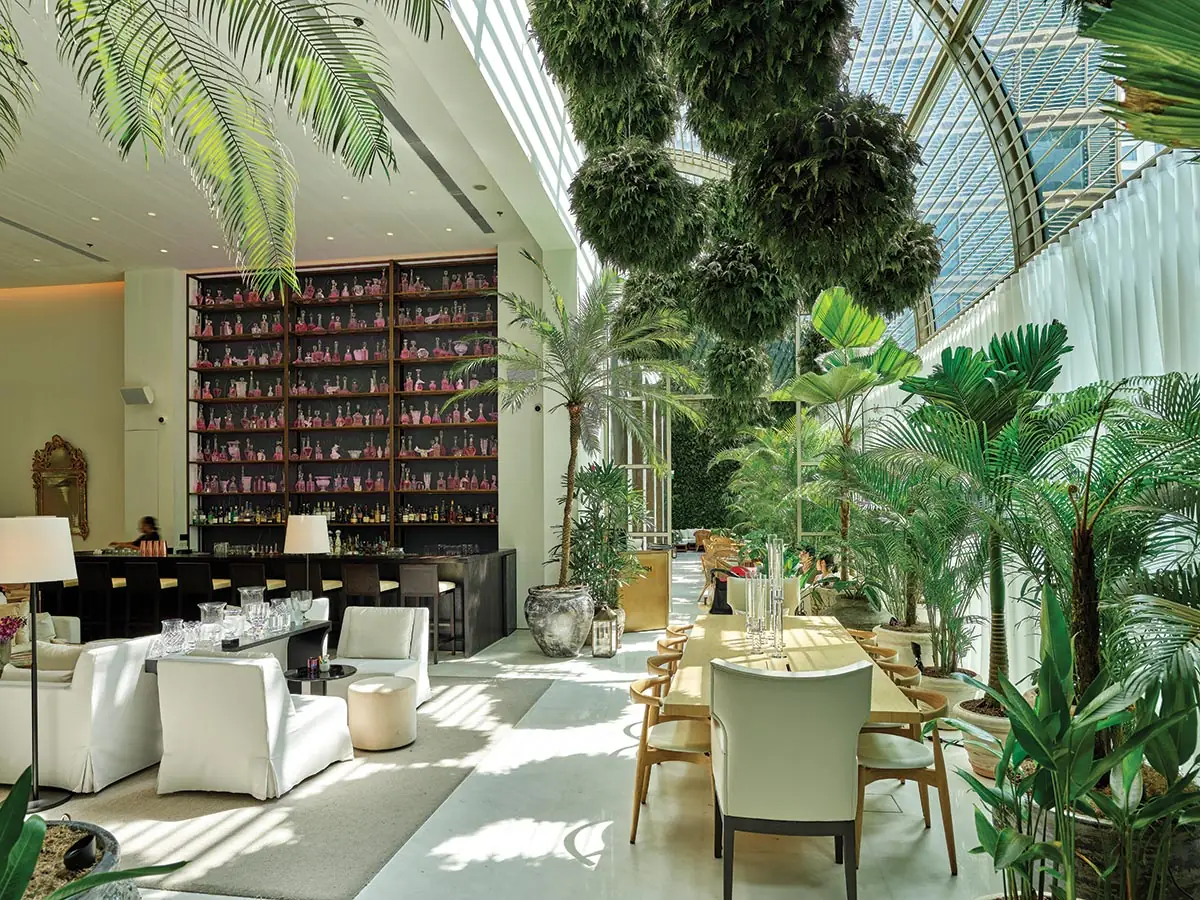
3
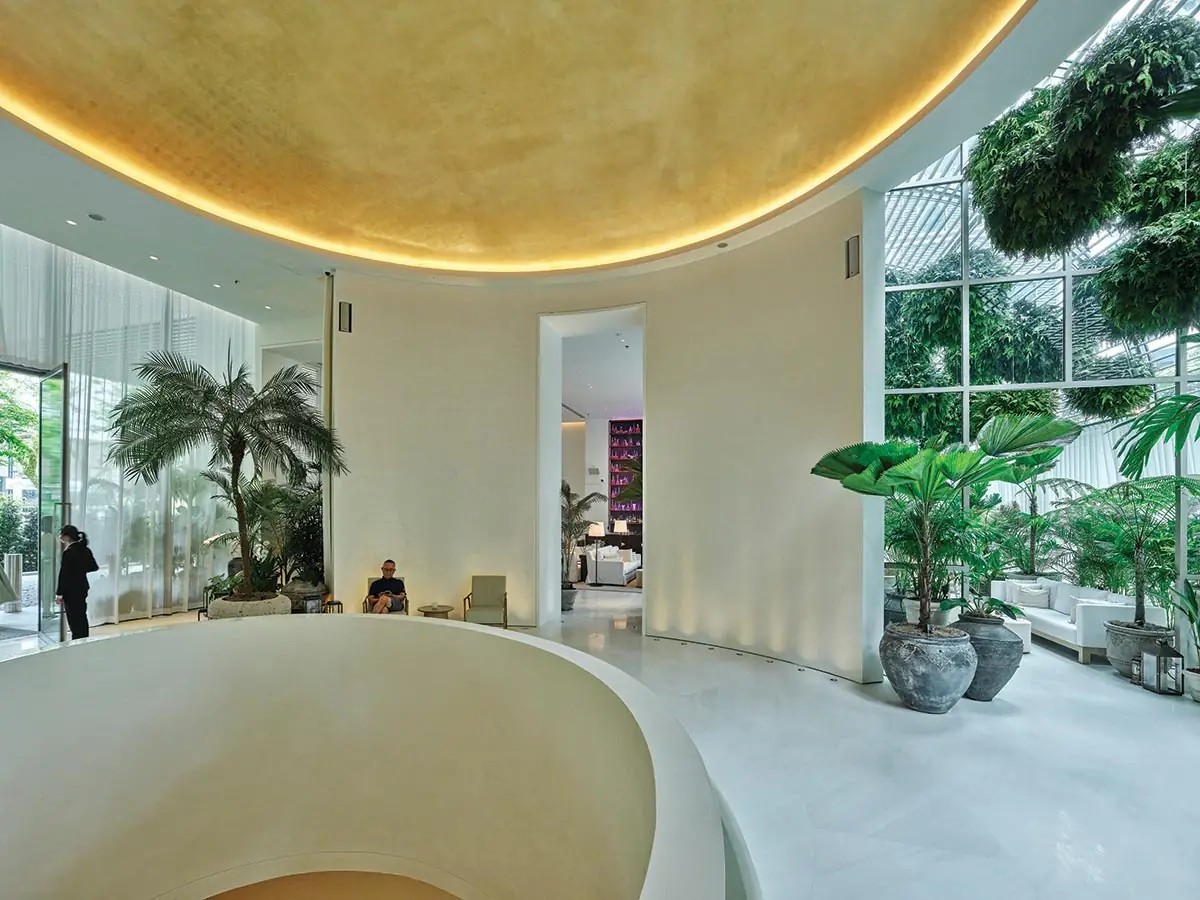
4
Potted and hanging plants are distributed throughout the hotel lobby (3 and 4) with its high ceilings. Photos © Timothy Hursley
Mounting the pool bridge on the hotel roof was not as spontaneous an idea as it might seem. Inspiration came from the multi-level structure that houses an infinity pool overlooking the city at Marina Bay Sands, which has garnered endless photos on Instagram. Edition’s pool deck features a trellised lounge that opens onto the spectacular full length of the water feature, lined with lounge chairs, shrubs and small trees. This enormous weight is supported within the bridge’s curved metal cladding by a pair of continuous trusses that rest on concrete brackets cast into the structure of the hotel and apartment building. A concrete slab supports the bridge transversely.
From the pool deck, guests can look through the slit of the apartment tower to the nearby skyscrapers, some of which also have terraces decorated with plants. Compared to the hotels that could be anywhere, guests know that their destination is unmistakably Singapore.
Click on the plan to enlarge
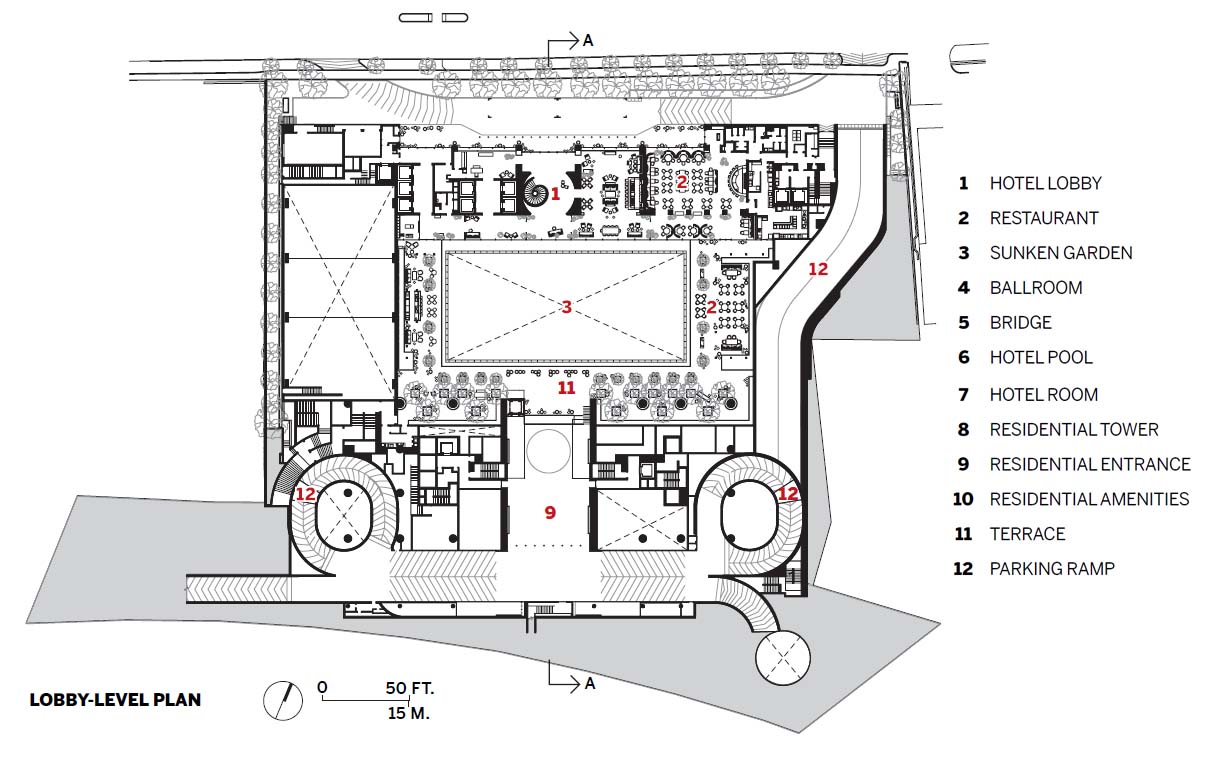
Click on the section to enlarge
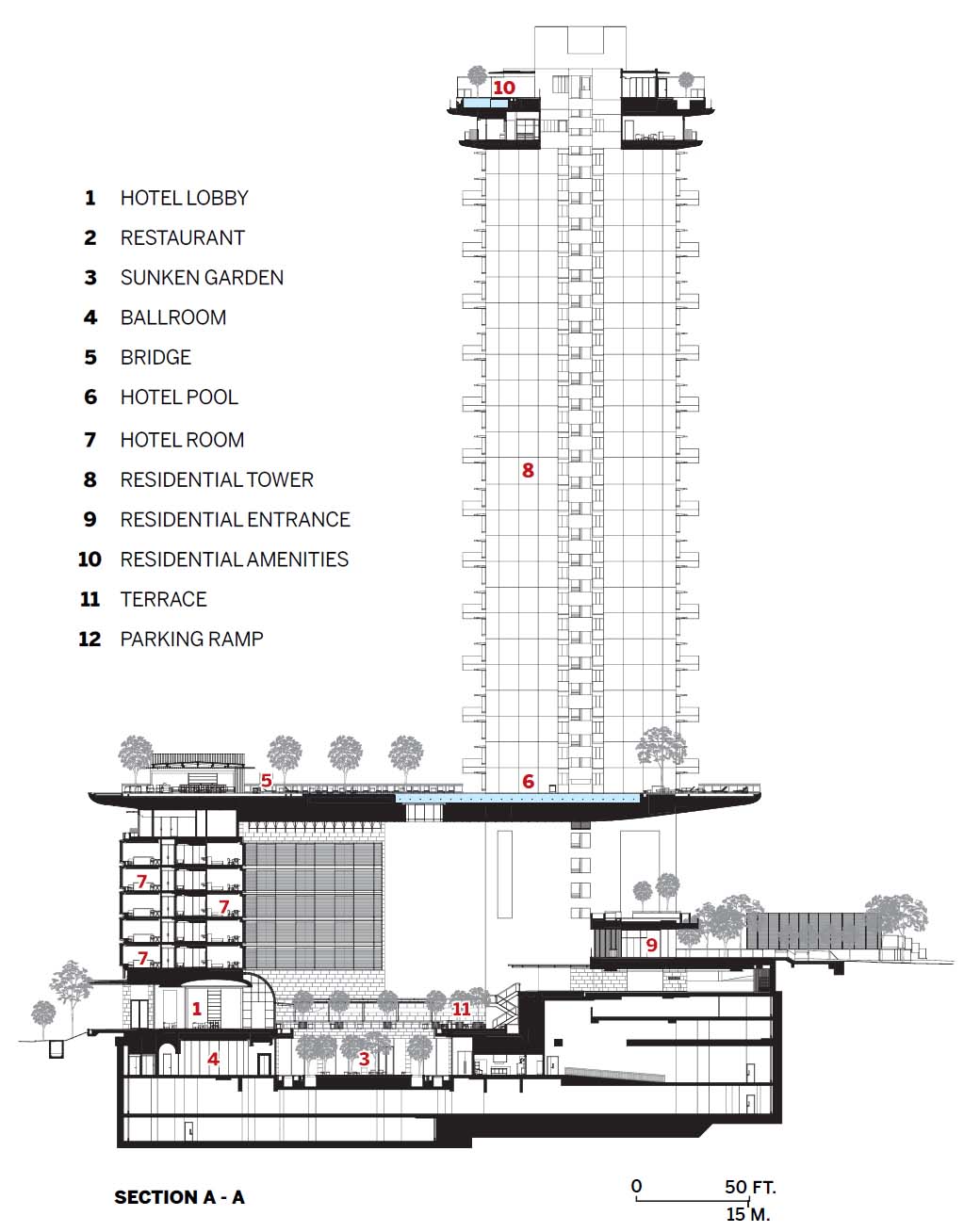
Credits
Architect:
Safdie Architects
Architect of the protocol:
DP Architects
Interior designers:
Ian Schrager Company, CAP Atelier, Axis ID
Engineers:
Meinhardt (civilian); Short Mech (m/d)
Advisor:
CKP (hospitality); Sitetectonix, Madison Cox Associates, Garden 26 (landscape); Acviron (acoustics); IHD Design (IT); Clair Solutions (AV); ALT (facades)
General contractor:
Kajima Overseas Asia
Customer:
Urban Development Company Ltd.
Size:
55,450 square meters
Cost:
$259.3 million (construction)
Completion date:
November 2023
Sources
Cladding:
Deshin (metal); Earth Arts, Surface Stone, Choo Building Materials (Stone)
Glazing:
AVA Global, Schüco
Lighting:
Technolite Singapore, Pelucchi, Million Lighting

